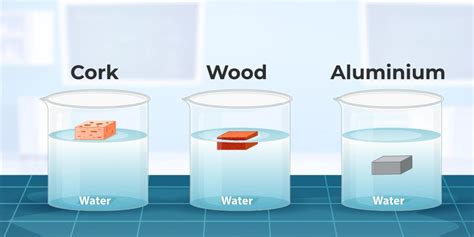Water Density Explained

The concept of water density is a fundamental aspect of understanding various phenomena in fields such as physics, chemistry, biology, and environmental science. Water density refers to the mass of water per unit volume, typically expressed in units of grams per cubic centimeter (g/cm³) or kilograms per liter (kg/L). At standard temperature and pressure conditions, pure water has a density of approximately 0.998 g/cm³ or 998 kg/L. However, this value can vary slightly depending on the temperature and pressure of the water.
Factors Influencing Water Density
Several factors can influence the density of water, including:
- Temperature: The density of water is inversely related to temperature. As the temperature of water increases, its density decreases, and vice versa. This is because warmer water molecules have more kinetic energy, causing them to move faster and spread out, thereby decreasing the density. Conversely, colder water molecules move slower and come closer together, increasing the density.
- Pressure: The density of water also varies with pressure. At higher pressures, the molecules of water are forced closer together, resulting in an increase in density. This effect, however, is more pronounced at extreme depths in the ocean or under high-pressure conditions.
- Salinity: The presence of dissolved salts (such as sodium chloride) in water affects its density. Seawater, for example, has a higher density than freshwater due to its salinity. The addition of salts increases the mass of the water without significantly changing its volume, thereby increasing its density.
- Dissolved Gases: The amount of dissolved gases, such as oxygen, carbon dioxide, and nitrogen, can also influence the density of water. Although the effect is relatively small compared to temperature and salinity, changes in the concentration of dissolved gases can slightly alter the water’s density.
Importance of Water Density
Understanding water density is crucial for various applications and natural processes:
- Ocean Circulation: Changes in water density due to temperature and salinity variations drive ocean circulation patterns. Cooler, saltier (and thus denser) water sinks, while warmer, fresher (less dense) water rises, creating circulation currents that play a critical role in global climate regulation.
- Aquatic Life: The density of water affects the buoyancy and movement of aquatic organisms. For instance, fish have swim bladders that they can inflate or deflate to adjust their density and ascend or descend in the water column with minimal effort.
- Water Resource Management: Knowledge of water density is essential for managing water resources, including the design of dams, water treatment plants, and irrigation systems. It also influences the mixing and stratification of reservoirs and lakes, which can impact water quality and the distribution of aquatic life.
- Climate Studies: Changes in ocean water density are an indicator of climate change, as they reflect alterations in global temperature and precipitation patterns. These changes can have profound impacts on marine ecosystems, sea levels, and weather patterns.
Measuring Water Density
Measuring water density can be accomplished through several methods, including:
- Hydrometer: A hydrometer is a device that floats in the water and indicates its density. It works on the principle of buoyancy, where the depth to which the hydrometer sinks is inversely proportional to the density of the water.
- Pycnometer: A pycnometer is a glass bottle with a precise volume used to measure the mass of a fixed volume of water, allowing for the calculation of its density.
- Digital Density Meters: These are electronic devices that use various principles (such as vibrating U-tube technology) to measure the density of liquids, including water, with high accuracy and precision.
Conclusion
In conclusion, water density is a critical parameter in understanding various natural and engineered systems. Its variation with temperature, pressure, salinity, and the presence of dissolved gases makes it a complex yet fascinating topic. The importance of water density in driving ocean circulation, affecting aquatic life, managing water resources, and studying climate change underscores the need for continued research and accurate measurement techniques. As our understanding of water density and its influences evolves, so too will our ability to predict, manage, and conserve this vital resource for future generations.
FAQ Section
What is the density of pure water at standard conditions?
+The density of pure water at standard temperature (20°C) and pressure (1 atm) conditions is approximately 0.998 g/cm³ or 998 kg/L.
How does temperature affect the density of water?
+Temperature inversely affects the density of water; as the temperature increases, the density decreases, and vice versa. This is due to the increased kinetic energy of water molecules at higher temperatures, causing them to spread out and decrease the density.
What role does salinity play in the density of seawater?
+Salinity increases the density of seawater compared to freshwater. The dissolved salts in seawater add mass without significantly altering the volume, resulting in a higher density.
Why is understanding water density important for ocean circulation studies?
+Water density plays a crucial role in ocean circulation, as it drives the sinking and rising of water masses. Cooler, denser water sinks, while warmer, less dense water rises, creating the circulation patterns that influence global climate.
How can water density be measured accurately?
+Water density can be measured using devices such as hydrometers, pycnometers, or digital density meters. Each method has its own principle of operation but provides accurate measurements of water density under various conditions.


